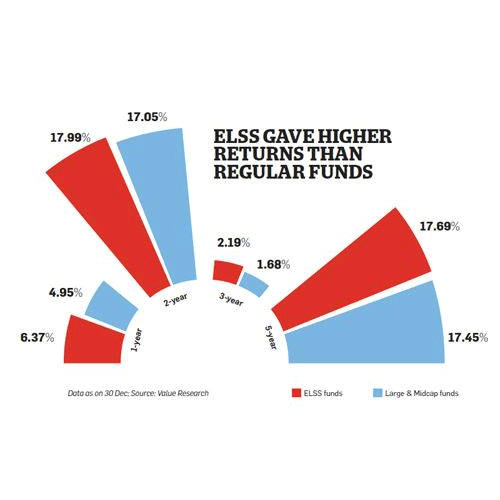Asset Class is a often used word in finance, especially investment & portfolio management. We also used the term many times in our articles. In this article a take a academic look at the various asset classes.
Why know about different asset classes?
Knowledge and understanding about asset classes is a very basic for any person thinks of self as an investor. Though it is not required that one be expert with every asset class, the bare minimum understanding of the nature of main asset classes, the risk profile, returns potential and the way of investing into such asset classes is a humble expectation. In brief, we can put the following reasons for knowing about asset classes:
- Increased choices for informed decision making
- Better investment management through asset allocation & diversification
- Identifying emerging opportunities & risks for investing
- Being rational, unbiased and confident in investment decisions
How do asset classes differ?
Each asset class is different and there are many points of difference against other asset classes. These differences ultimately impact the investment objectives and performance. The asset classes may differ upon the following things…
- Nature and characteristics
- Correlation with other asset classes
- Risk and Returns potential / trade-off
- Ideal investment horizon
- Behaviour w.r.t. markets, interest rates, economic environment, etc.
- Rules, regulations and taxation
Definition and Types of asset classes:
An ‘Asset Class‘ can be defined as a group of securities or investments that display similar characteristics or behave in similar fashion in markets or economic variables and are subject to similar rules & regulations.
There are broadly three basic asset classes considered by most investment experts: (i) Equity securities (ii) Fixed Income or Debt securities and (iii) Cash equivalents. In addition to this, (iv) Real Estate and (v) Commodities are also considered by many as important asset classes given their characteristics and penetration among investors.
The asset classes can be further broken down through ways, but such segregations are generally mixed together whenever we talk of asset classes at a broader level. For example, Equity can be further broken down as large-cap, mid-cap & small-cap but for the purpose of asset class discussions, we categories them all into equities, even though their risk-return behaviour may slightly differ from each other. Breakups can be effectively used for determining diversification within an asset class. But irrespective of any asset class line-up, each one is expected to reflect different risk and return investment characteristics, and will perform differently in any given market environment.
Equity:
Our readers must be very familiar with Equity asset class by now. Most would also know that over long term equity as an asset class has outperformed other asset classes in India as well as in more developed economies. Equity basically enables efficient movement of funds from people having excess to businesses that need it to fund growth and business operations. The businesses in turn provide employment, goods & services to public and tax revenues to government and try to make the most productive use of the capital. Equity is a risky asset class and investments should be made for long term. The returns from such investments are in form of capital gains by price appreciation and/or dividend payments by companies.
In India, the equities are largely held directly through stock exchange or indirectly through mutual fund equity schemes. Exposure to equity can also be made through Exchange Traded Funds (ETFs) and Portfolio Management Schemes (PMS) and indirectly through pension schemes / plans that invest in equities. Insurance products, especially Unit Linked Plans (ULIPs) is an another route well known route. Equity can also be held in form of stakes or Private Equity in businesses. This option, however, is limited super HNI and corporate investors.
Debt:
Debt is an another asset class which your would be very familiar with. Some of the popular avenues of debt investments are through Fixed Deposits of banks & corporates and bonds issued by governments, RBI and the likes. Small Saving schemes and pension plans by government is an another major avenue of investing. Mutual funds schemes are lately becoming popular with retail investors too. The mutual funds offer a wide variety of products to suit every need and risk profile of the customer. It is a relatively less risky asset class and returns are generally in form of interest payments and/or capital gains due to impact of interest rates changes over time.
Commodities:
Commodities may be treated as a distinct asset class since their nature and behaviour differs from the other asset classes. Indians have been traditional investors in ‘gold’ as a commodity. Other commodities are now finding a favour with investors, albeit slowly. Precious metals like Gold & silver remain the biggest avenue for investment and awareness & exposure to other commodities is very low. The impressive performance of these metals over past few years have made them as asset class hard to be ignored by investors.
The commodity prices tend to follow the cyclical pattern of underlying commodities which is why it is important to understand the demand-supply factors. Needless to say, this is not an asset class for the less informed or the faint hearted, especially for agro-commodities & base metals. Investment is generally for short to medium term and the idea is to profit from price movements or hedge against actual exposure. As an asset class, commodities have been observed to have low correlation with the other asset classes and hence offer excellent potential for portfolio diversification. Investments into Gold specially has also become more convenient & practical for investors with the launch of Gold ETFs and mutual fund schemes.
Real Estate:
Real estate is the original idea of creating assets before the other asset classes become popular among investors. Real estate, especially residential / commercial units, unlike other asset classes, except gold, gives the owners a sense of emotional satisfaction and confidence. Holding physical property has also its own share of social acknowledgment of your financial standing. Land is also treated more than an asset in the largely agrarian economy of India.
From an investor’s perspective, the investment in physical real estate has its own share of challenges w.r.t. clear titles, transparency, transaction costs, etc. Emergence of new avenues for investments has, to some extend, made it feasible to get exposure to this asset class with less risks. The returns in this asset class is in form of rental/ lease payments and price appreciation. Real estate are the least liquid of all the asset classes and investment horizon is generally long-term to very long term in nature.
Cash:
As an asset class, cash and cash equivalents is unlike any other asset class. The purpose of holding cash is either for transaction / payment reason or as a precaution for any eventuality or as a buffer for taking advantage of opportunities in other asset classes/ products. Cash is the least productive of all asset classes and delivers little or no returns and over time looses out its real value as well. Cash equivalent holdings are dictated by convenience, comfort and cash habits of people. As an investor, one should try to minimise cash equivalent holdings to an optimum level that strictly meets your needs. Mutual fund liquid funds is considered as the ideal avenue for putting aside money for short durations, giving advantages of superior post-tax returns, high liquidity, very low costs & convenience.
Other asset classes:
Apart of the above major asset classes discussed, there are also some more asset classes considered by few investment experts. You may come across asset classes like currency, derivatives and collectibles. Currency, as an asset class is distinct in nature and it derives its existence because of the exchange rate fluctuations between countries. Currency is something of great interest to governments, banks, multinational corporates having business incomes arising in different countries, and even to individuals where source of income and consumption are in separate countries. Derivatives is an asset class that ‘derives’ its value from the actual underlying asset class. It is more of an hedging and trading tool and fraught with very high risks, something which is suited only for the experts. Collectibles is an emerging asset class where investments are made in art, antiques & other collectibles. This asset class is now finding more favour with HNI investors who are looking for some diversification & spice in their portfolio.
Using Asset Classes:
Understanding of the asset classes leads us to the question – Whats’ next?. The usage of different asset classes are basically two fold. First, the understanding is useful for purpose of diversification to optimise risk-return trade-off. This is because different asset classes perform differently in different markets and also differently from each other. Diversification only works when you combine assets that have opposite or low correlation with each other. The second idea is to decide and follow the ‘asset allocation’ strategy. The asset allocation strategy has been cited by investment managers & experts as the biggest deciding factor for long term wealth creation. Financial advisors have propagated asset allocation strategies of tactical, dynamic and strategic in nature to their investors keeping in mind their risk profile.
In brief:
As markets grow and become mature, there would increasingly be arrivals of new asset classes or product options in existing asset classes. As of today, there already exists a wide variety of asset classes and product options within them, something which wasn’t available a decade back. The increasing choices of asset classes and financial products brings complexity, confusion & challenges to any investor. An informed and wise investor would always try and understand & appreciating the nature and nuances of different asset classes. The awareness and comfort level can then be used for designing portfolios based on age old principles of asset allocation and diversification.










